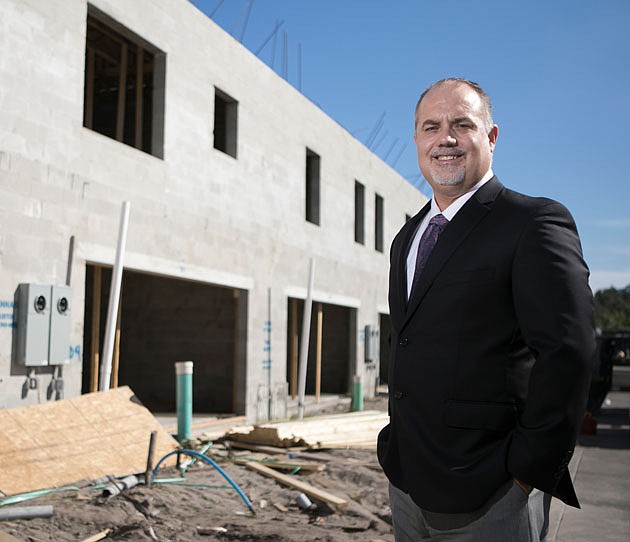- November 24, 2024
-
-
Loading

Loading

Even with eight consecutive years of residential growth, the Tampa Bay area isn't likely to lose steam anytime soon.
That's because homebuilders are venturing increasingly to secondary markets throughout the five-county metropolitan services area (MSA) that ranges from Sarasota to Pasco counties.
As a result, submarkets such as Parrish, Wesley Chapel, Venice, North Port and Plant City, to name a few, will remain popular spots for new homes and related commercial space throughout 2018, experts say.
“I don't think we have to worry about things crashing economically in Tampa Bay anytime in the next year,” says Bill Eshenbaugh, whose Eshenbaugh Land Co. tracks agricultural, residential and commercial property sales regionwide.
High consumer confidence levels and stock market gains, together with regional job growth, have pushed in-migration and home buying, Eshenbaugh notes.
At the same time, the renewed emphasis on so-called “pioneer markets” like North Port, in Sarasota County, and builder discipline have kept the industry humming — even as overall land sales throughout the region have remained largely flat.
Where land price increases have occurred, it's largely been the result of rising demand by multifamily rental and senior housing developers, says Chris Worley, president and co-founder of Landmark Reports LLC, a Tampa-based company that collects and analyzes building permit and other related data throughout the Gulf Coast.
“The market is pushing outward,” Eshenbaugh says. “And that's partly because there's been a concerted effort over the past 12 months to maintain affordability and because all of the distressed lots from the last decade's housing crisis have now burned off.
“I believe Pasco County will continue to be a really prime market,” he adds. “I don't think we're very far away from a time when Pasco County will generate as many annual building permits as in Hillsborough County.”
Even so, builders and lenders alike today seem to be more cautious than they were a decade ago, they say, when companies often took huge land positions that they were unable to convert to housing when the market collapsed.
“The business has changed fundamentally,” says Ryan Sampson, Eshenbaugh Land's principal. “All the homebuilders we deal with now have a much more cautious outlook. Developers are the same way. Phasing is taking place in smaller increments, land positions are smaller, and deals take longer to complete as a result.”
Worley also believes that the industry -- led regionally by residential giants like Lennar Homes, DR Horton and Pulte/Centex — learned harsh lessons from the economic downturn of a decade ago.
“The mentality some builders had 12 or so years ago, that if they build it people will come, that's not happening,” says Worley. “And I don't see that happening again.”
That trend is also being fueled by heightened regulations on lenders and a desire to avoid the kind of poor loan-inspired collapses that took down Bear Stearns and a host of regional banks last decade.
“Lenders today are aiming for minimal risk,” Eshenbaugh says. “There's far more discipline now than there was in 2004 and 2005, even, in terms of what's being lent, what's being bought and how it's being underwritten.”
Apartment development, especially in urban areas like Tampa and St. Petersburg, will likely continue in the coming year, but not at the same pace of the past three years, Eshenbaugh and Worley say.
“We expect multifamily development to remain very active, but quality sites are increasingly harder to find,” Sampson says.
Eshenbaugh adds some apartment developers are converting former retail sites to multifamily locations. In one Tampa-area case, a developer acquired a 20-acre retail strip center and razed half of it to make way for 300 new apartments.
Meanwhile, massive, master-planned suburban infill projects ranging from Wiregrass Ranch, Lakewood Ranch in Sarasota and Manatee counties and the West Villages in Sarasota County will likely continue to outperform the overall region.
“West Villages I expect will be the next major development corridor in Sarasota and Manatee counties,” Worley says. “That whole market down there is about to blow up, and you're already seeing corresponding commercial development in anticipation of that.”
Increased density will also become more prevalent, Eshenbaugh contends, as a way both to eliminate sprawl and concentrate infrastructure resources.
Sampson, Worley and Eshenbaugh also expect millennial buyers to be a greater part of the overall market in coming years, despite a national trend toward delayed home buying, especially among that younger demographic, ages 21 to 37.
To combat that economic lethargy, developers and builders are creating more amenity-laden communities that target younger buyers, with add-ons such as Metro Development Group's “crystal lagoon” — seven-acre lakes that offer a unique water feature.
“I see that as a game changer,” Eshenbaugh says of the lagoons. “They're creating a huge buzz with that concept, and the communities where they're being installed often have waiting lists of buyers.”
Worley adds that the opposite end of the demographic spectrum also will continue to influence the amount, and types, of development in Florida.
He expects more mixed-use projects to be proposed, along with medical office buildings, more medical-related retail sites and 55-plus communities throughout the Tampa region.
There are concerns, however.
Eshenbaugh frets about run-ups in interest rates and how that could staunch home buying, especially among first- and second-time consumers. Worley says impact fees, which could increase dramatically in areas such as Hillsborough County, would clip sales if hikes were to be put in place.
But overall, both Eshenbaugh and Landmark executives say the market should remain robust in the coming year if conditions remain static.
“I expect the market to remain calm and steady,” says Worley.